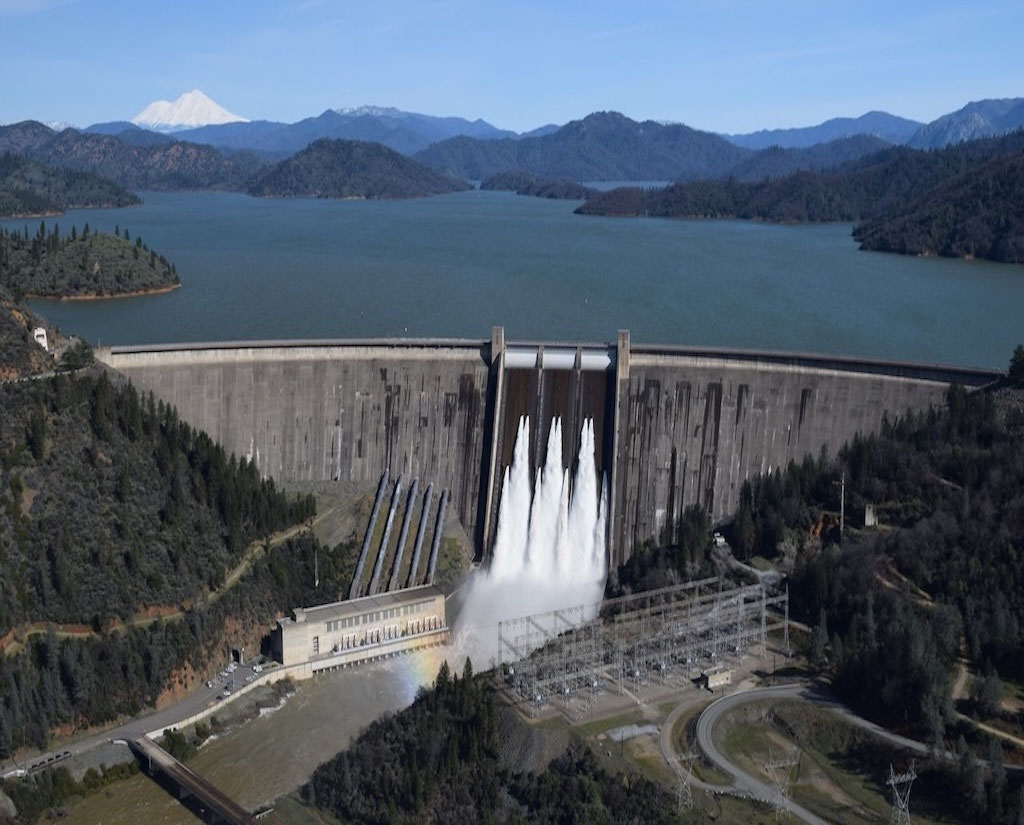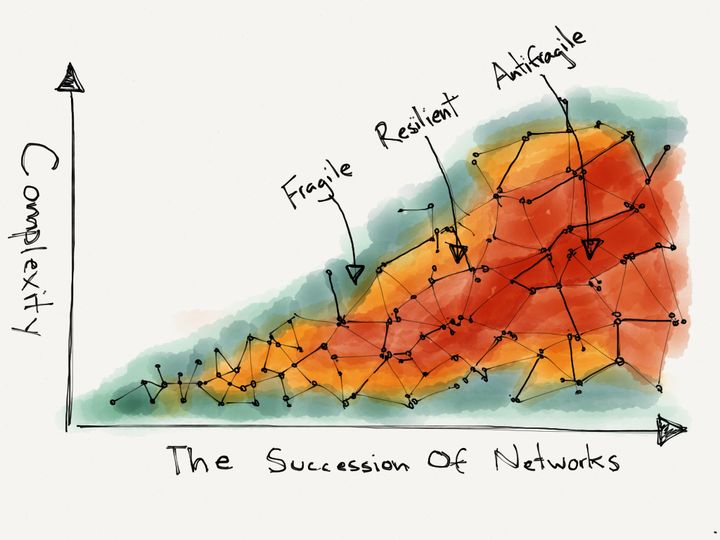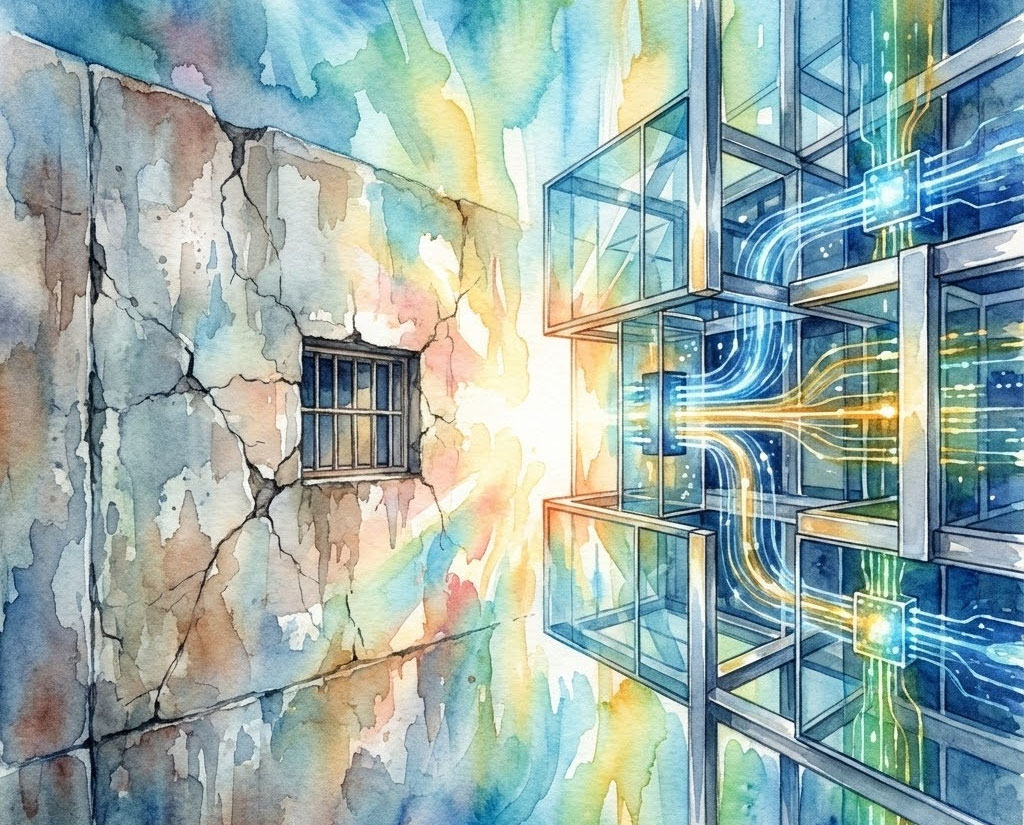
The Invisible Guardians Beneath America's Waters
Beneath the surface of every major reservoir in America lies a hidden world of massive infrastructure that most people never see or think about. Concrete and steel conduits, some large enough to drive a truck through, channel millions of gallons of water through carefully engineered pathways. These aren't just pipes – they're the arteries of a system that provides water to cities, generates electricity for millions of homes, and controls floods that could devastate entire regions.
America's network of dams manages enough water to cover the entire state of Texas in nearly two feet of water. But the real story is about the intricate engineering that makes this massive system work, day after day, year after year.
Now imagine you need to perform maintenance on this infrastructure. Not the visible parts above water, but the critical components that lie 50, 100, or even 200 feet below the surface. The conduits that must continue operating while you work on them. The sealing systems that experience pressures and forces that would crush a car. This is where engineering meets one of its most fundamental constraints: the simple fact that humans cannot safely work in these environments.
The Depth of the Problem
At 200 feet below the surface, you've entered what diving professionals call the deep zone, where specialized gas mixtures and saturation diving techniques become necessary. At 300 feet, you're operating at pressures that require years of training and equipment worth hundreds of thousands of dollars. These are the working depths where America's largest dam conduits draw water from reservoirs.
The conduits themselves dwarf human scale. Picture standing inside a circular tunnel 20 feet in diameter. The ceiling arcs more than 10 feet above your head. Now fill that space with rushing water under tremendous pressure, add the disorienting darkness of deep water, and surround the entrance with trashracks and intake structures designed to filter out debris. This is the workspace where critical infrastructure maintenance must occur.
Unlike a building where you can shut off utilities during construction, these conduits serve multiple critical functions simultaneously. They generate electricity during peak demand hours, supply municipal water systems that can't be interrupted, and provide irrigation water during growing seasons. The infrastructure must continue operating during any maintenance work.
Visibility in these environments is measured in inches rather than feet. Sediment stirred by water movement creates conditions where powerful underwater lights illuminate only a small sphere around the work area. Navigation relies on guidelines, sonar, and careful pre-planning rather than direct observation.
The Innovation Frontier: Remote Solutions Revolution
The most exciting engineering challenges arise when conventional approaches reach their limits. When human presence becomes impossible, innovation becomes inevitable. The underwater infrastructure maintenance problem has created a unique sandbox for technological creativity, where engineers must rethink fundamental assumptions about how work gets done in extreme environments.
Remote deployment presents a fascinating puzzle. How do you deliver a solution to a workspace anywhere from 20 to 200 feet below the surface, guide it through obstacle courses of trashracks and intake structures, and position it precisely at a target location where GPS doesn't work and visibility extends only inches?
The geometry challenge alone opens up remarkable design possibilities. A circular concrete conduit 25 feet in diameter demands completely different approaches than a rectangular steel-lined opening measuring 15 feet by 30 feet. Engineers get to create adaptive systems that can recognize their environment and modify their behavior accordingly.
Navigation in these environments resembles spacecraft operations more than traditional underwater work. Remote sensing and navigation technologies must provide operators with enough information to make critical decisions about structural integrity and long-term performance, driving innovation in underwater acoustics, pressure sensing, and real-time data transmission systems.
Engineering the Possible: From Concept to Deployment
The path from identifying this challenge to implementing a working solution requires systematic thinking that begins with understanding not just what needs to be accomplished, but how success will be measured in an environment where traditional testing and validation approaches don't apply.
Technical feasibility forms the foundation of any viable approach. Can the proposed solution actually function at depths up to 200 feet, where water pressure reaches nearly 90 pounds per square inch and water velocity is up to 100 feet per second? Will the materials maintain their properties in cold water over extended periods? These questions demand detailed engineering analysis backed by materials science, fluid dynamics, and structural calculations.
Adaptability becomes crucial when facing the geometric variations found across different installations. The most compelling approaches demonstrate flexibility without sacrificing effectiveness, showing how the same core technology can address multiple scenarios.
Safety considerations permeate every aspect of solution development. Beyond the obvious requirement that no human divers enter the work area, successful approaches must demonstrate fail-safe behaviors. What happens if communication with surface operators is lost? The most robust solutions anticipate failure modes and include built-in responses that protect both the infrastructure and the equipment.
The Innovator's Moment
Today's impossible challenge involves fixing critical infrastructure in environments where human presence is prohibited by safety requirements. The engineering problems are complex enough to demand breakthrough thinking, yet focused enough that solutions can be developed, tested, and implemented within realistic timelines.
The underwater infrastructure maintenance problem sits at the intersection of multiple rapidly advancing technologies. Robotics, materials science, underwater navigation, remote sensing, and autonomous systems are all converging at exactly the moment when this challenge demands innovative solutions.
The impact extends far beyond the immediate application. Solutions developed for underwater conduit sealing could revolutionize offshore energy infrastructure, underwater mining operations, submarine maintenance, and deep-sea research facilities. The navigation systems, materials, and deployment strategies created for this challenge will find applications across industries that most inventors haven't even considered yet.
This isn't theoretical research—these are real problems affecting critical infrastructure that millions of people depend on every day. The solutions developed will be built, deployed, and put to work in the field.
The convergence of need, timing, and technological readiness creates a unique moment for breakthrough innovation. The Bureau of Reclamation's "Seal Team Fix" challenge on HeroX is looking for innovative approaches to seal large conduits in submerged environments without diver intervention. If the engineering puzzles we've explored here spark your interest, this might be the perfect opportunity to turn that curiosity into action and potentially help solve one of infrastructure's most persistent challenges.








